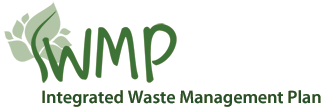2.4.2 Select preferred alternatives
After the identification and evaluation of possible alternatives with regard to their implications be it negative or positive in terms of socio-ecological and economical impacts, under this section a municipality is required to indicate its chosen alternatives for each waste management goal. Each goal may require specific resources i.e. x amount of money, x number of additional personnel etc.
For Goal 1: Promote recycling and the recovery of waste: the following will be required:
What method/methods will be employed to achieve this goal? What does the Waste Act say i.e. the waste management hierarchy approach? What does the Outcome 10 target say? What local resources could be employed to achieve this goal? For an example:
In the evaluation of preferred alternatives the best option was to deliver the service through a Public-Private partnership. This will entail the following:
- Industries will in conjunction with the municipality establish a Public-Private partnership that will drive separation at source as well as recycling initiatives in order to meet the target to divert recyclables from going to waste disposal facilities, as well as promote other options of the waste management hierarchy
- The municipality's role would be to educate it's households on the benefits of separation at source i.e. amongst other things it has economical benefits because the waste will not be contaminated, it will be diverted from landfill thereby will prolong the municipality's waste disposal site lifespan, residents will enjoy social benefits, jobs will be created in the recycling value chain etc.
What methods could be employed to drive recycling?
A Public Private Partnership between the municipality and a private company could be established to drive recycling in the community. The municipality's role could be that of providing receptacles as required by the standards whereas the private recycling company would be responsible for removing the recyclables from households thereby will be responsible for transport costs.
In densely populated settlements such as informal settlements: The municipality could deliver the service using the following method:
Communal collection points whereby community members could make use of wheelbarrows to collect the recyclables from the individual households into designated communal collection points. Once or twice a week, these would be collected by the recycling company to an MRF or buy-back centre. In this process, the municipality should as much as possible try to involve local sub-contractors that will use their own vehicles in order to promote SMME development and entrepreneurship. This could be a cheap and a cost effective way of removing the recyclables from the households whilst at the same time it will create employment and promote SMME development.
The sub-contractors could also be advised to collect recyclables separately in order to generate more income from the sale of the recyclables.
For Goal 2: Ensure the effective and efficient delivery of waste services
The chosen alternatives were as follows:
Waste collection services in the municipality will be delivered by the municipality itself. This will require an additional of 40 general workers. However, the municipality will sub-contract the service for densely populated areas such as informal settlements at a cost of R5 million. The municipality will employ an additional waste manager to manage the contract in order that the service can be delivered effectively.
Main menu - nice menus
Table of contents
- Executive Summary
- List of figures
- List of boxes
- List of tables
- List of graphs
- List of acronyms
- 1. Introduction
- 2. Contents of the IWMP's
- 3. Communication and stakeholder participation
- 4. Implementation instruments
- 5. Approval process
- 6. Reporting on implementation, monitoring and review
- 7. References

